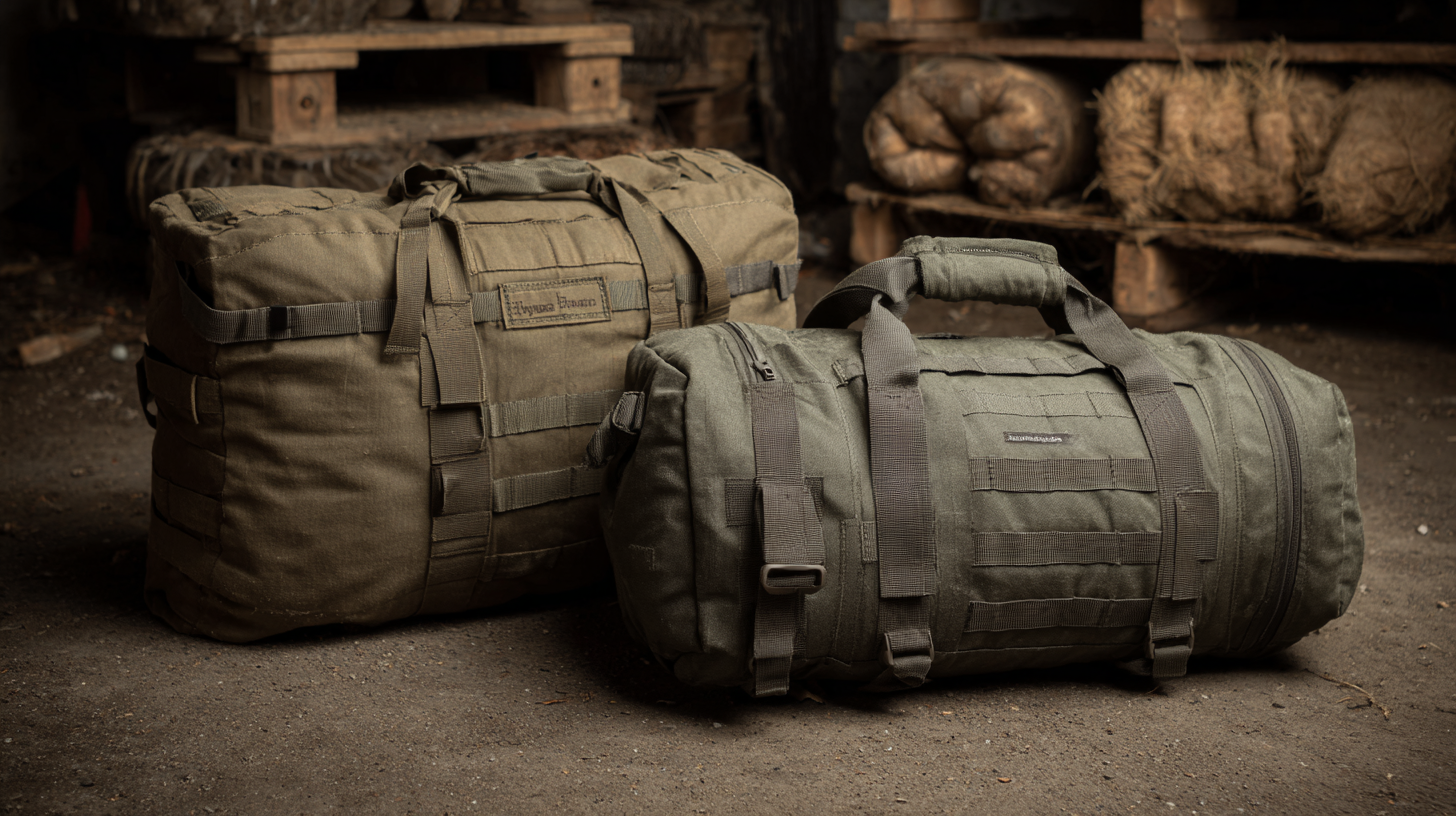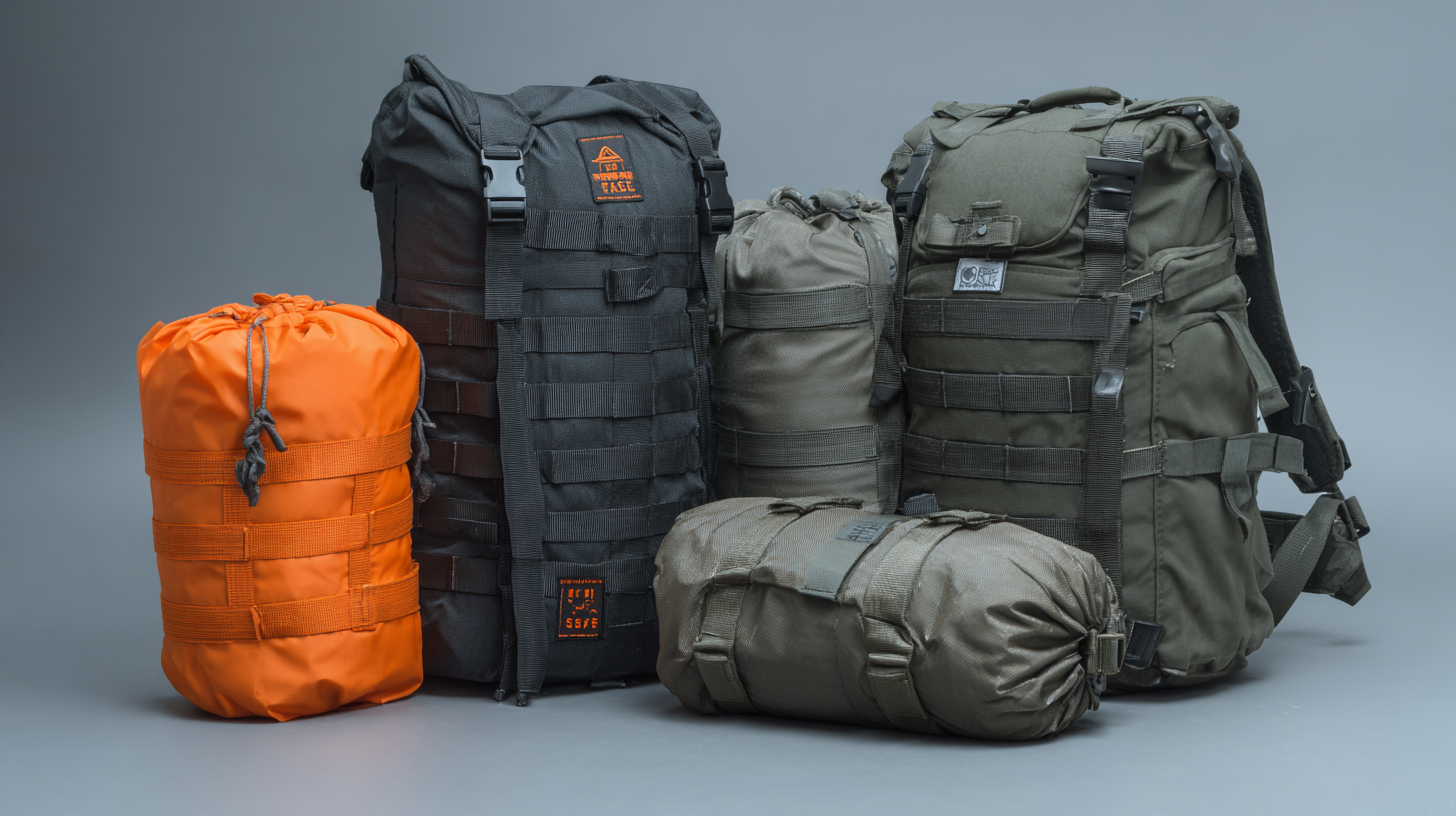Uncovering the Essential Features of Escape Bags for Ultimate Survival Preparedness
In today's unpredictable world, the significance of being prepared for emergencies is more critical than ever. Escape bags, also known as bug-out bags or survival kits, have emerged as essential tools for individuals seeking to ensure their safety during unforeseen events. According to the Survival Industry Report 2022, nearly 70% of Americans believe that having an emergency preparedness plan is crucial, yet only 20% have taken actionable steps to create one. These data highlight a growing awareness of survival strategies, emphasizing the need for well-designed escape bags that include essential supplies for various scenarios. Whether facing natural disasters, civil unrest, or personal emergencies, a well-equipped escape bag can mean the difference between chaos and survival, making it imperative to understand their essential features for ultimate preparedness.

Understanding the Purpose and Importance of Escape Bags for Survival
Escape bags, often referred to as emergency preparedness kits, play a vital role in ensuring safety during unforeseen circumstances such as natural disasters. These bags are designed to be easily accessible and portable, providing essential items that can help sustain individuals and families in critical situations. The primary purpose of an escape bag is to facilitate a swift getaway, supplying necessities such as food, water, first aid supplies, and tools that are crucial for survival.
Understanding the importance of escape bags goes beyond merely having items packed away; it involves recognizing the need for preparedness and timely action. When a disaster strikes, panic can ensue, and having a well-organized escape bag can mean the difference between safety and chaos. It serves as a reminder to individuals and families to plan ahead, ensuring they are equipped to face emergencies head-on. With the right contents tailored to local risks, escape bags empower people to protect themselves and navigate through challenging situations with greater confidence.
Uncovering the Essential Features of Escape Bags for Ultimate Survival Preparedness
| Feature | Description | Importance |
|---|---|---|
| Water Purification | Filters or tablets to make water safe for consumption. | Essential for hydration in survival situations. |
| First Aid Kit | Includes bandages, antiseptics, and other medical supplies. | Critical for treating injuries and preventing infections. |
| Fire Starting Tools | Lighters, matches, or fire starters. | Provides warmth, allows for cooking, and signals for help. |
| Emergency Food Supplies | Non-perishable, high-calorie foods. | Critical for maintaining energy during survival scenarios. |
| Multi-tool | Combines several tools into one, including knives and screwdrivers. | Versatile for various tasks, from building shelter to food preparation. |
| Signal Mirror | Used to reflect sunlight to signal for help. | Aids in rescue operations and increases visibility from a distance. |
| Survival Blanket | Compact, insulated blanket to retain body heat. | Essential for warmth in extreme weather conditions. |
Key Components Every Escape Bag Must Include for Optimal Preparedness
 When it comes to survival preparedness, having the right escape bag can make all the difference. Essential components should include water purification systems, food supplies with a long shelf life, and first aid kits. According to the Emergency Management Agency, the foundational rule of survival is the “Rule of Three” – you can survive three minutes without air, three hours without shelter, three days without water, and three weeks without food. Therefore, a well-equipped escape bag must prioritize these essentials to optimize chances of survival.
When it comes to survival preparedness, having the right escape bag can make all the difference. Essential components should include water purification systems, food supplies with a long shelf life, and first aid kits. According to the Emergency Management Agency, the foundational rule of survival is the “Rule of Three” – you can survive three minutes without air, three hours without shelter, three days without water, and three weeks without food. Therefore, a well-equipped escape bag must prioritize these essentials to optimize chances of survival.
Another critical aspect is the inclusion of communication tools. In emergencies, access to information can be life-saving. A portable battery charger, a multi-band radio, and personal signaling devices are vital for staying connected. Industry statistics suggest that 70% of survival situations can be mitigated by effective communication and information. In addition, personal safety items—such as a whistle, flashlight, and multi-tool—provide not only protection but also versatility in various scenarios. By ensuring these key components are included, individuals can achieve optimal preparedness for any unexpected situation.
Assessing Essential Tools and Gear for Different Survival Scenarios
When preparing for various survival scenarios, the selection of essential tools and gear can significantly impact your chances of survival. According to the Survival Industry Research Institute, nearly 75% of outdoor enthusiasts prioritize multi-functional tools in their escape bags due to their versatility in emergency situations. Multi-tools, for example, can provide not just cutting and opening capabilities, but also and more importantly, can serve as vital resources for building shelter, gathering food, and performing first aid.
Furthermore, a study by the Preparedness Association revealed that 85% of survivalists include communication devices in their gear. These include emergency radios and satellite phones that can be crucial for relaying your location or receiving updates during emergencies. Additionally, items such as water filtration systems and portable food supplies are indispensable. Research indicates that 65% of survival situations extend beyond 72 hours, underscoring the necessity for sustained nourishment and hydration solutions. Tailoring your escape bag to encompass these essential tools ensures you are prepared for a range of unforeseen scenarios, ultimately enhancing your survival preparedness.
Tips for Customizing Your Escape Bag to Fit Personal Needs and Environments
When customizing your escape bag to meet personal needs and specific environments, it’s essential to assess your unique situation, lifestyle, and potential threats. According to a report by the Federal Emergency Management Agency (FEMA), nearly 60% of Americans do not have a disaster preparedness plan. This statistic underscores the significance of tailoring your escape bag to prepare for various emergencies, whether natural disasters, technological failures, or civil unrest. Each individual must consider factors such as geographic location, family size, daily activities, and any health conditions that necessitate specific supplies.
Incorporating versatile gear into your escape bag can enhance its effectiveness. For example, survivalist experts recommend including items like a multi-tool, first aid kits, water purification systems, and durable clothing. According to the Survival Products Industry Report, the market for survival gear saw a 25% increase in demand in the past two years, driven largely by heightened awareness of emergency preparedness. Customizing your escape bag with personal items, like medications and important documents, can ensure you’re not just prepared but also comfortable in times of crisis. Tailoring your escape bag is about more than just survival; it's about building confidence in your ability to face unexpected challenges.
Essential Features of Escape Bags for Ultimate Survival Preparedness
Maintaining and Updating Your Escape Bag for Long-Term Readiness
When it comes to maintaining an effective escape bag, regular updates and careful planning are paramount for long-term readiness. According to a report by the Survival Industry Association, nearly 70% of emergency preparedness kits are not adequately stocked or updated, which can significantly hinder survival chances in a crisis. To ensure your escape bag remains functional, it is essential to review its contents every six months. This includes checking expiration dates on food and medical supplies, replacing items that may have degraded, and incorporating new tools that better suit evolving emergency scenarios.

Moreover, tailoring your escape bag to reflect personal needs and local threats is critical. For instance, the Federal Emergency Management Agency (FEMA) recommends including items based on regional risks, such as water purification devices in areas prone to natural disasters. Additionally, staying informed about new survival gear and technologies can enhance your preparations. Industry surveys indicate that 83% of survivalists have upgraded their gear in response to emerging threats, emphasizing the importance of adaptability in your escape bag strategy. Regularly assessing and updating your escape bag not only equips you with the necessary resources but also provides peace of mind in uncertain times.
Related Posts
-

Understanding the Role of Escape Bags in Emergency Preparedness Strategies
-

Innovative Uses of Best Emergency Preparation Bags Across Various Industries
-

Exploring the Evolution of Military Clothing: From Historical Uniforms to Modern Tactical Gear
-

Overcoming Common Challenges with the Best Quick Rucksacks for Your Adventures
-

Navigating the Future of Men's Pants Industry at the 138th Canton Fair 2025: Trends and Insights
-

The Future of Tactical Leg Holsters Redefining Comfort and Efficiency
